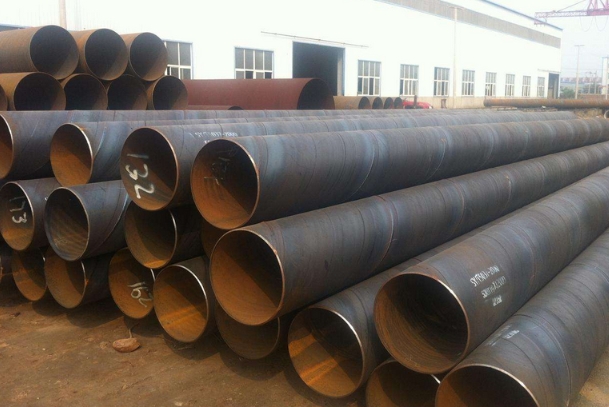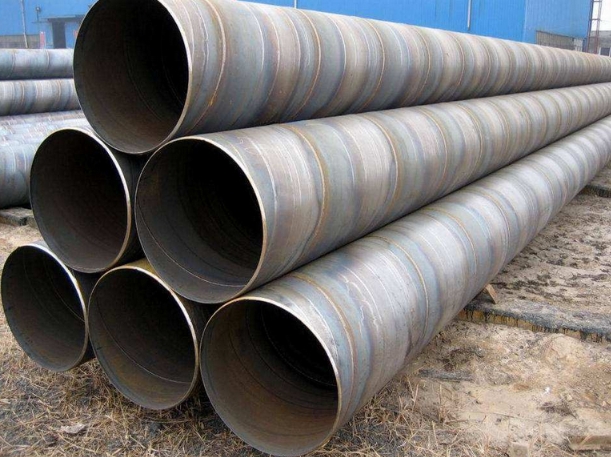Spiral steel pipe is the most widely used steel pipe category in the steel pipe industry. At the same time, spiral steel pipe is also a steel pipe material with many types, wide uses, and detailed classification. So according to different classification methods, how many types of spiral steel pipe are there? This article will give you a detailed analysis of the types of spiral steel pipes, as well as the standards, advantages and disadvantages of various types.
Classification by production method
(1) Seamless steel pipes-hot-rolled pipes, cold-rolled pipes, cold-drawn pipes, extruded pipes, jacked pipes
(2) Welded pipe
(a) By process - arc welded pipe, resistance welded pipe (high frequency, low frequency), gas welded pipe, furnace welded pipe
(b) According to welding seam - straight seam welded pipe, spiral welded pipe(1) Simple cross-section steel pipes – round steel pipes, square steel pipes, oval steel pipes, triangular steel pipes, hexagonal steel pipes, rhombus steel pipes, octagonal steel pipes, semi-circular steel pipes, others
(2) Complex cross-section steel pipes – unequal hexagonal steel pipes, five-petal plum blossom-shaped steel pipes, double-convex steel pipes, double-concave steel pipes, melon-shaped steel pipes, conical steel pipes, corrugated steel pipes, watch case steel pipes, and others
Thin-walled steel pipe, thick-walled steel pipe
Steel pipes for pipelines, steel pipes for thermal equipment, steel pipes for mechanical industry, steel pipes for petroleum and geological drilling, container steel pipes, steel pipes for chemical industry, special purpose steel pipes,

Welded steel pipe, also called welded pipe, is a steel pipe made of steel plates or steel strips that are welded after being curled and formed. The production process of welded steel pipes is simple, the production efficiency is high, there are many varieties and specifications, and the equipment investment is small, but the general strength is lower than that of seamless steel pipes.
Since the 1930s, with the rapid development of continuous rolling production of high-quality strip steel and the advancement of welding and inspection technology, the quality of welds has continued to improve, and the varieties and specifications of welded steel pipes have increased day by day, and have replaced non-woven steel pipes in more and more fields. Sewing steel pipe. Welded steel pipes are divided into straight seam welded pipes and spiral welded pipes according to the form of the weld.
The production process of straight seam welded pipe is simple, the production efficiency is high, the cost is low, and the development is rapid. The strength of spiral welded pipes is generally higher than that of straight seam welded pipes. Welded pipes with larger diameters can be produced from narrower billets, and welded pipes with different diameters can also be produced from billets of the same width. However, compared with straight seam pipes of the same length, the weld length is increased by 30~100%, and the production speed is lower.
Therefore, smaller diameter welded pipes mostly use straight seam welding, while large diameter welded pipes mostly use spiral welding.

Spiral steel pipe is a spiral steel pipe made by bending strip steel or coiled plate in a spiral shape and welding the inner and outer seams with double-sided submerged arc automatic welding. It can be widely used in water, electricity, and chemical industries for the following reasons. In production in other industries.
1) As long as the forming angle is changed, steel pipes of various diameters can be produced from strip steel of the same width, which is easy to adjust.
2) Because it is continuously bent and formed, the fixed length of the spiral tube is not limited and the length can be determined at will.
3) The spiral shape of the weld is evenly distributed on the entire circumference of the spiral tube, so the spiral tube has high dimensional accuracy and strong strength.
4) Easy to change size, suitable for the production of small batches and multiple varieties of spiral pipes.
The weld seams of spiral steel pipes are longer than those of straight seam pipes of the same specification. Under the same wall thickness, spiral steel pipes bear the greatest pressure.
The weld defects of spiral steel pipes are “oblique defects”. During use, the main stress direction of the steel pipe, that is, the equivalent defect length in the axis direction of the steel pipe, is smaller than that of the straight seam pipe. Secondly, since the pipeline steels are all rolled steel plates, the impact toughness has a large anisotropy, and the rolling The CVN value in the rolling direction can be 3 times higher than the CVN value perpendicular to the rolling direction.

